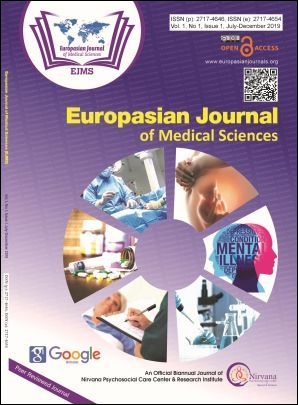Treatment of Chalazian: a Comparative Cross-sectional Study
Keywords:
Chalazion, Intralesional Triamcinolone Acteonide, Incision and Curettage, Meibomian GlandAbstract
Introduction: Chalazion is a common eyelid margin disorder manifesting as granulomatous inflammation associated with meibomian gland lipids. There are three methods of treating chalazian: Intralesional
Triamcinolone Acetonide (0.1-0.3 ml of 40mg/ml), Incision and Curettage and Conservative Treatment (hot compression +lid hygiene + antibiotic ointment).
Methods: Patients with chalazian presenting to the Outpatient Department (OPD) of the Lumbini Eye Institute and Research Center (LEIRC) from 15 March 2017 to 15 July 2017 were included in the study. They underwent
any of the three procedures (Conservative Treatment or Triamcinolone Acetonide Injection or Incision and Curettage) according to their choice. We compared all three methods of treatment of chalazion on follow up
visit at 2 weeks, which was done to determine effectiveness in terms of reduction of size or complete resolution of the chalazia.
Results: Out of 112 patients enrolled in study 65(58%) were females and 47(42%) were male with a male: female ratio of (0.7:1). The mean age of involvement was 25.7years (SD 10.3). At 2 weeks follow up there was
complete resolution in incision and curettage (I and C) group 77 % (41/53) and in Triamcinolone Acetonide (TA) injection group 63 %( 20/32). Pearson’s correlations showed that I and C were superior to any other forms of intervention for any size of chalazian followed by intralesional injection of TA.
Conclusion: Incision and Curettage remained the best choice for the treatment of chalazion followed by triamcinolone acetonide injection but may need multiple injections.
Downloads
Downloads
Published
How to Cite
Issue
Section
License
The author(s) retain the ownership of the copyrights for their work published in EJMS without any restrictions. Upon submission, the author(s) grants EJMS a license to publish, including to display, store, copy, and reuse the published content.
License to Publish
By submitting a manuscript to EJMS, the author(s) grant the journal a non-exclusive license to:
- Publish and distribute the content in all formats, media, and platforms (both existing and future), while identifying EJMS as the original publisher.
- Reproduce, display, and store the content in both print and online formats, including institutional and digital repositories.
- Translate, adapt, and summarize the work, including reprints, extracts, and abstracts.
- Develop derivative works based on the original content.
- Include the work in electronic databases and provide links to third-party materials.
Creative Commons Licensing
In addition to EJMS’s publishing rights, authors grant third parties the right to use, share, and distribute their work under the Creative Commons Attribution 4.0 (CC BY 4.0) International License. This allows unrestricted use of the content, provided proper attribution is given to the original author(s) and the journal.

